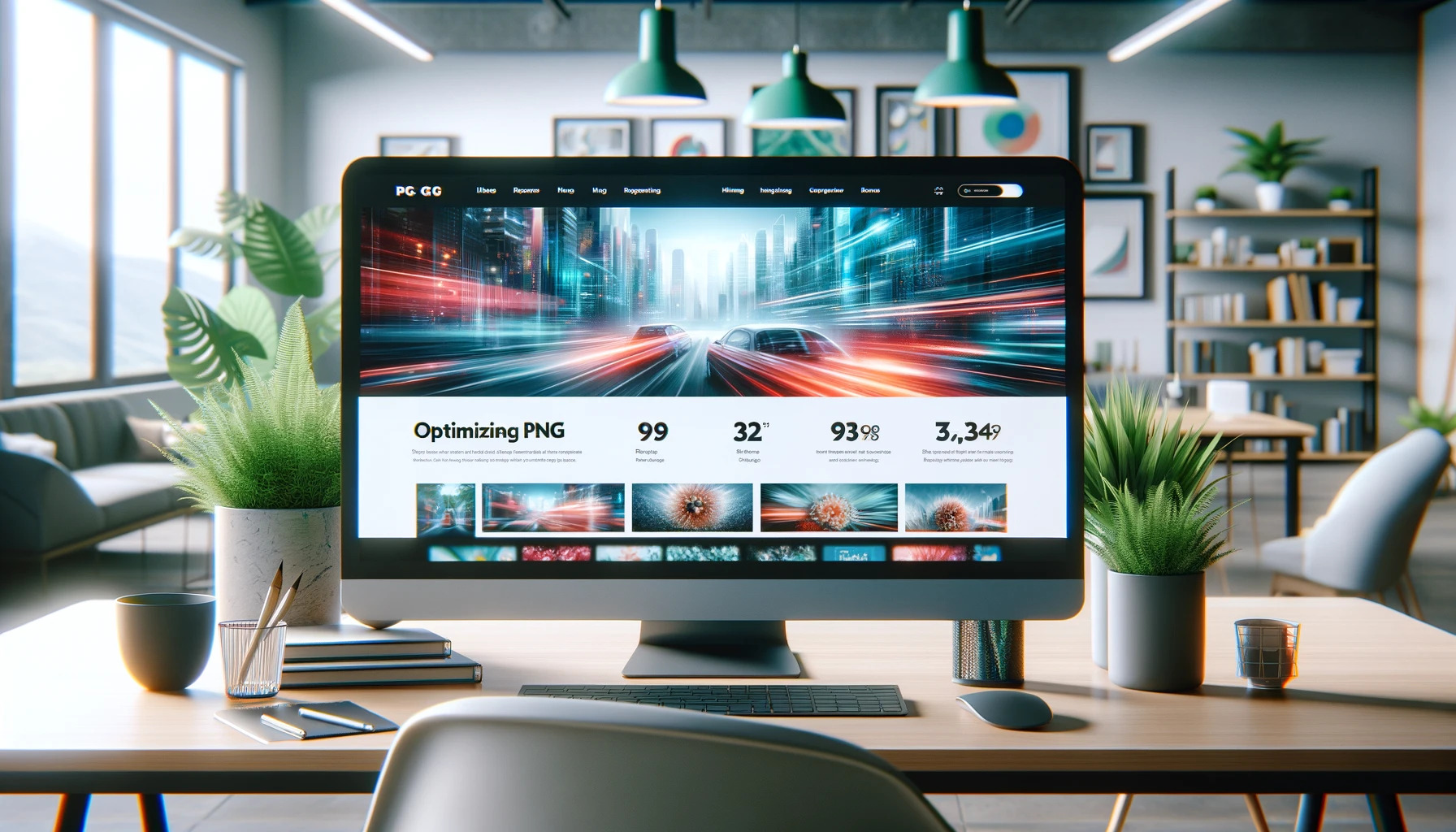How to Optimize PNG Images for Faster Web Performance
By Orlando
Published March 18, 2024
 How to Optimize PNG Images for Faster Web Performance
How to Optimize PNG Images for Faster Web Performance
In today's fast-paced digital environment, ensuring your website loads quickly is not just an advantage; it's a necessity. Among the myriad ways to enhance site speed, optimizing images is paramount. PNG files, renowned for their lossless compression and support for transparency, are a popular choice for web graphics. However, their quality comes at a cost of file size. Let's explore how to tweak these images for optimal web performance without sacrificing quality.
Understanding PNG Files
PNG files are a go-to for web designers and developers due to their high-quality visuals and the ability to add transparency to PNG. This format is perfect for logos, icons, and other web graphics where clarity is key. However, the better the quality, the larger the file size, which can slow down your website. Thus, optimizing these images is crucial for enhancing user experience and SEO rankings.
1. Choose the Right PNG Type
PNG images come in mainly two types: PNG-8 and PNG-24 (including PNG-32 for transparency support). PNG-8 is suitable for simple graphics with fewer colors, as it supports up to 256 colors. PNG-24 and PNG-32, on the other hand, offer millions of colors, making them ideal for complex images with gradients and transparency. Selecting the appropriate type based on your needs can significantly reduce file size.
2. Compress Without Compromising Quality
Several tools and software options allow for PNG compression by reducing file size while maintaining visual quality. Tools like TinyPNG use smart lossy compression techniques to minimize file size. The magic lies in identifying and stripping away unnecessary data without affecting the image's appearance.
3. Resize PNG for the Web
It's common to resize PNG images for web use. Displaying a large image in a small area leads to unnecessary bandwidth usage, slowing down your site. Tools like Adobe Photoshop or free online services can resize images to the dimensions needed on your webpage, drastically reducing the file size.
4. Use PNG Editing to Enhance Quality
PNG editing can involve adjusting the image's resolution, color depth, and other parameters to strike a balance between quality and file size. Editing software can also help to enhance PNG quality through techniques like sharpening, which improves the clarity and detail of the image without significantly increasing the file size.
5. Employ CSS Sprites for Multiple PNG Images
When your site uses multiple PNG images for icons or UI elements, consider using CSS sprites. This technique combines several images into one large image file that loads all at once, reducing HTTP requests and speeding up page load times. You then use CSS to display only the part of the image needed for a specific element.
6. Leverage Browser Caching for PNG Files
Browser caching allows visitors' browsers to store loaded resources, such as PNG images, so they don't need to be reloaded on subsequent visits. This technique significantly speeds up website performance for returning visitors. Implementing caching requires adjustments to your site's .htaccess file or configuring your web server settings.
7. Optimize Image Delivery with CDN
A Content Delivery Network (CDN) stores your site's static content, including images, on multiple servers around the world. When a user visits your site, the CDN delivers images from the server closest to them, minimizing download times. This is especially beneficial for websites with a global audience.
8. Implement Lazy Loading for Images
Lazy loading defers the loading of images until they're about to enter the viewport. This means that if a user visits a page and doesn't scroll down, images placed lower on the page won't be loaded immediately. This can significantly reduce initial load times and save bandwidth for users and servers alike.
9. Consider Alternative Formats
While optimizing PNG files is effective, sometimes switching to a more efficient format like WebP or AVIF can offer better compression and quality characteristics. These formats are particularly useful for complex images and can reduce file sizes by a significant margin compared to PNGs.
10. Monitor and Test Web Performance Regularly
Finally, the key to maintaining fast web performance is regular monitoring and testing. Use tools like Google PageSpeed Insights to measure how your optimizations affect your site's speed and user experience. Continuously adjusting and optimizing based on real-world data ensures your website remains fast and efficient.
Conclusion
Optimizing PNG images for faster web performance involves a multifaceted approach, from selecting the right file type to employing modern web technologies like CDNs and lazy loading. By carefully considering each aspect of image use on your website, you can ensure that your site remains quick to load without compromising on the visual quality of your graphics. This not only enhances user experience but also contributes positively to your SEO efforts, making your site more favorable in the eyes of search engines.